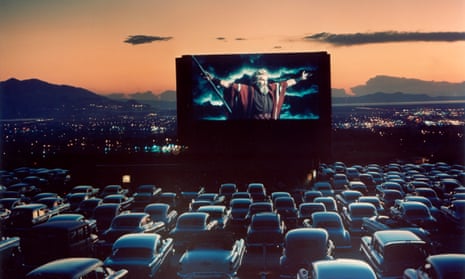D Edward Vogel was eight when he first worked on the popcorn stand at Bengies, his family’s drive-in cinema in Middle River, Maryland. “I was a bit of a show for people,” he said, now 50 years on and a third-generation drive-in proprietor. “I had to stand on a soda-pop case to put the popcorn in the machine. But I knew the number one rule of any movie theatre: don’t let the popcorn burn!”
Bengies was designed by Vogel’s father; state-of-the-art in 1956, it still boasts the largest projection screen in the US. The red-and-blue art-deco sign atop the marquee and the Formica tables are all original. It’s a self-described “real-live, honest-to-God, all-American, drive-in movie theatre.” It is also the last of its kind in the state of Maryland.
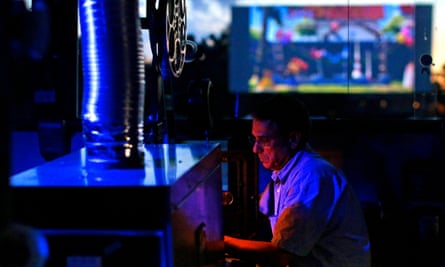
The late 1950s were the heyday of the drive-in, with more than 4,000 of them across the US. As of August 2018, according to figures from the United Drive-In Theater Owners Association, of which Vogel is secretary, there were only 317 left. The decline in recent years, however, seems to have levelled off. Industry holdouts, such as Bengies – currently reopening for the season – have weathered change and new openings have bolstered numbers. It can’t be called a comeback but perhaps represents a foothold to ensure the survival of this iconic American attraction.
The first drive-in opened in 1933 and, as the talkies became a global phenomenon and the US fell in love with the automobile, drive-ins flourished, particularly in rural areas. They offered a community hub, with families mingling before and after screenings, and soon became emblematic of teen culture: in a 1950 article by John Durant for US magazine the Saturday Evening Post, they were described as “parking lots for petters”. However, by the 1960s their existence was threatened, first by the 1966 Uniform Time Act (the countrywide adoption of daylight savings time), which pushed darkness back by an hour in summer – and later by the arrival of home entertainment and the packaged pleasures of the multiplex.
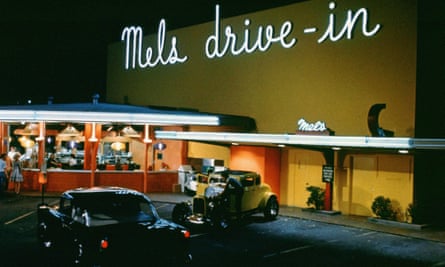
Photograph: PictureLux/The Hollywood Archive/Alamy
The drive-in has a fragile business model: mostly seasonal and vulnerable to bad weather. One wet summer can mean the end. In the 1980s, more than 1,000 drive-ins closed. The early 21st-century switch from 35mm film to digital projection – an expensive upgrade for what are mostly family-run businesses – wiped out many more. Today’s drive-ins can struggle with the prices set by Hollywood distributors.
Newcomers have defied the odds – and perhaps good business sense – to open. In the town of Amenia, New York state (population 4,000), John and Paul Stefanopoulos are among a newer generation of drive-in operators. Their father, Billy, came to the US from Greece in the early 1970s with his brothers and opened Four Brothers Pizza, now a chain of nine restaurants (eight in New York, one in Massachusetts). The close-knit family get together twice a week to watch movies, which is what gave John and Paul the idea of building a drive-in cinema in the field behind one of their restaurants, which opened in 2014.
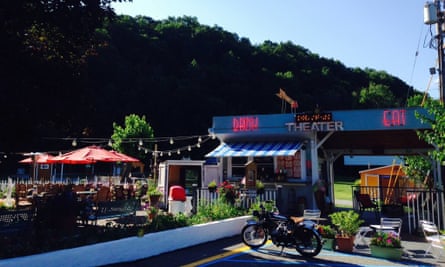
“We’re far [away] from a cinema and there’s not much entertainment at night,” said John. “People want to get out of their houses and come together again, especially in summer. It’s the resurgence of Main Street America.”
Paul added: “The main thing for us, growing up Greek, we had huge respect and awe for the American style of life, and the drive-in is quintessential Americana.”
Neither brother had been to a drive-in before but the design of Four Brothers speaks to a collective cultural idea of what a drive-in should be. Illuminated 1950s movie signs and vintage cars decorate the site. It has a village fete atmosphere, with a firepit, swinging benches and a kids’ playground. At weekends, it hosts live bands. The car-hop service delivers ice-cream floats from the kitsch snack shack or steaming Greek-style pizza from the Four Brothers restaurant – direct to your car.
The Stefanopoulos brothers had noticed most of their custom came from out of state, and for the 2019 season an Airstream has been converted into the Hotel Caravana (sleeps two, from $319 plus tax, including movies), a Miami Vice-style camper with palm-leaf wallpaper, neon signs and a yellow-corded telephone to call room service. It sits on a private deck, which will soon offer a hot tub and hammock, from which guests can watch the film.
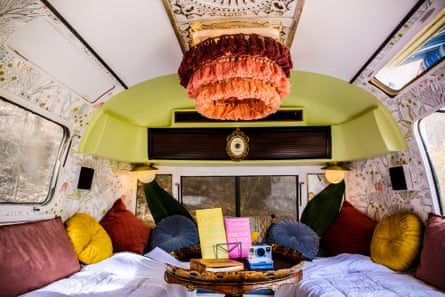
As with many other drive-ins, it has become a destination in its own right, providing local businesses in the area with more custom. In its fifth year, it is very much a small-town success story. At the height of summer, more than 1,000 guests gather in the glow of the big screen to watch first-run films.
Most of the newer drive-ins have opened in rural areas, where real-estate prices are lower. Field of Dreams in north-west Ohio, the project of a cinephile couple Rod and Donna Saunders, has two locations so far from light pollution the night sky above the cars is an attraction in itself. The Bangor Drive-In (season starts 24 May) in Maine was originally built in 1950, then reopened by a group of local business owners who missed what the drive-in brought to the community. Hounds Drive-In was self-funded by Preston Brown, who grew up in the cinema his father ran. He built it next to his camping site in the foothills of North Carolina. It’s packed all summer, with those who arrive on foot listening from deckchairs.
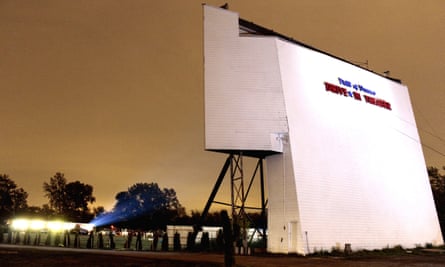
Drive-ins cater to a sense of nostalgia for the American culture immortalised in films such as Grease and American Graffiti. Leaning your seat back for a view of the big screen and the stars above feels like partaking in a conversation with the past and all the pleasure that brings. But for locals it also offers an affordable alternative to a trip to the multiplex, which for a family of four can cost more than $100; whereas at most drive-ins, the price is $15 to $25 per car. They don’t often inflate the prices at the concession stand (snack bar) either, knowing it would be easy for guests to bring their own snacks in. At Bengies, you can get a large popcorn and “bladder-busting” soda for less than $10.
In many ways, the appeal of the drive-in and the world it conjures up caters to the same audience as the immersive theatrics of Secret Cinema or communal viewing at rooftop cinema clubs. Immersive-theatre director Michael Counts intends to bring the two together at August Moon, a recreated drive-in experience, due to open in May 2020 in Pigeon Forge, Tennessee.
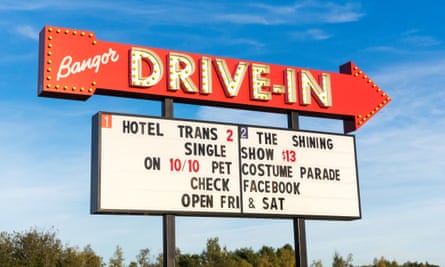
“It’s going to feel like you walked into the outdoors in 1965 at sunset,” he said, describing the 40,000 sq ft dome that will use theatre and film technology to replicate a starry sky above and fireflies buzzing around, with souped-up vintage cars to sit in.
For Vogel of Bengies, however, the heart of the experience is about more than the space; it’s about showmanship and the hard-working families that make it happen. “I go out of my way to be the best showman I can be, and I’m not alone. All across the country, drive-in people take pride in what they do. There’s no showmanship at the indoors,” he said. “The best part? Once the sun sets and it’s time to bring on the show.”
Looking for a holiday with a difference? Browse Guardian Holidays to see a range of fantastic trips
